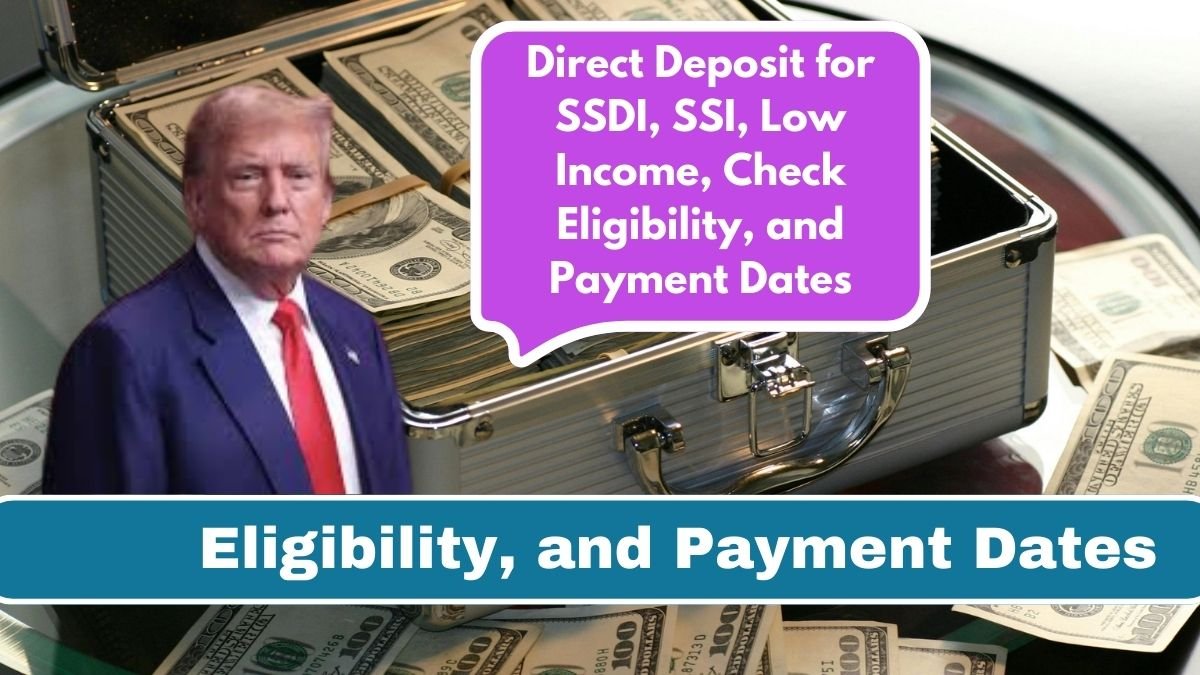If you’re receiving benefits like SSDI (Social Security Disability Insurance) or SSI (Supplemental Security Income), understanding how direct deposit works can make your life a lot easier. Managing your finances is already enough to think about, so why not let payments come to you hassle-free? Plus, with payments as substantial as $2,400 or even $1,200, you want to ensure you get every penny safely and on time.
Let’s break down how direct deposit works for these programs, how to check if you’re eligible, and when you can expect your payments. We’ll even throw in a helpful table to simplify things.
What Is Direct Deposit, and Why Should You Use It?
Direct deposit is like having a personal courier deliver your money straight to your bank account. No need to wait for the mail or worry about lost checks. It’s fast, secure, and reliable. The best part? You don’t have to lift a finger once it’s set up.
With direct deposit, SSDI and SSI recipients can breathe easy knowing their money will arrive on time, even on holidays or during emergencies. Think of it as skipping the line and heading straight to the front.
Who Is Eligible for Direct Deposit?
Here’s the good news: most people receiving SSDI or SSI are eligible for direct deposit. The Social Security Administration (SSA) encourages all beneficiaries to use it.
Here are some scenarios where you qualify:
- You’re receiving monthly SSDI payments due to a disability.
- You’re getting SSI benefits because you have limited income and resources.
- You fall under low-income criteria and receive federal aid.
The only thing you’ll need is a valid bank account or an alternative payment method, like a Direct Express Debit Mastercard, if you don’t have a bank account.
How to Set Up Direct Deposit
Setting up direct deposit is easier than you think. You can do it online through the SSA’s website, over the phone, or by visiting a local SSA office. You’ll need the following:
- Your bank account number.
- Your bank’s routing number.
- Personal identification (like your Social Security number).
If you don’t have a traditional bank account, the Direct Express card is a great alternative. It works like a prepaid card where your payments are deposited automatically.
Payment Dates You Should Know
Timing is everything, right? The payment dates for SSDI and SSI depend on a few factors:
For SSDI:
- Payments are typically made based on your birth date.
- If you were born between the 1st and 10th of the month, payments arrive on the second Wednesday.
- If your birth date falls between the 11th and 20th, payments come on the third Wednesday.
- If you were born after the 20th, expect your money on the fourth Wednesday.
For SSI:
- SSI payments are usually deposited on the 1st of each month. However, if the 1st falls on a weekend or holiday, you’ll receive your money earlier.
Here’s a quick table to make it even clearer:
| Program | Payment Date | Notes |
|---|---|---|
| SSDI | 2nd, 3rd, or 4th Wednesday of the month | Based on your birth date. |
| SSI | 1st of each month | Early payment if the 1st is a holiday or weekend. |
How Much Can You Expect?
If you qualify, you could receive up to $2,400 for SSDI or $1,200 for SSI. The amount depends on your work history, income level, and living situation. The SSA calculates your benefit based on your earnings record or financial need for SSI.
Why Direct Deposit Is a Game-Changer for Low-Income Households
Let’s face it—every dollar counts when you’re on a tight budget. Direct deposit ensures your money is safe and accessible without the need for check-cashing fees or delays. Plus, it’s one less thing to stress about when managing your finances.
Conclusion
Switching to direct deposit for SSDI, SSI, or other benefits is a smart move. It’s secure, efficient, and ensures you get paid on time, every time. Whether it’s $2,400 or $1,200, you deserve peace of mind knowing your benefits are safely in your hands.
FAQs
How do I know if I’m eligible for SSDI or SSI?
You can check your eligibility by visiting the Social Security Administration website or contacting their office. Eligibility is based on your income, work history, or disability status.
Can I use direct deposit without a bank account?
Yes, you can use a Direct Express Debit Mastercard to receive your payments if you don’t have a bank account.
What happens if my payment date falls on a holiday?
If your payment date is on a holiday or weekend, you’ll receive your money on the last business day before that date.
How can I update my direct deposit information?
You can update your information online through your My Social Security account, by phone, or by visiting your local SSA office.
Is direct deposit mandatory for SSDI and SSI?
While not mandatory, the SSA highly encourages direct deposit to ensure faster, safer, and more reliable payments.





